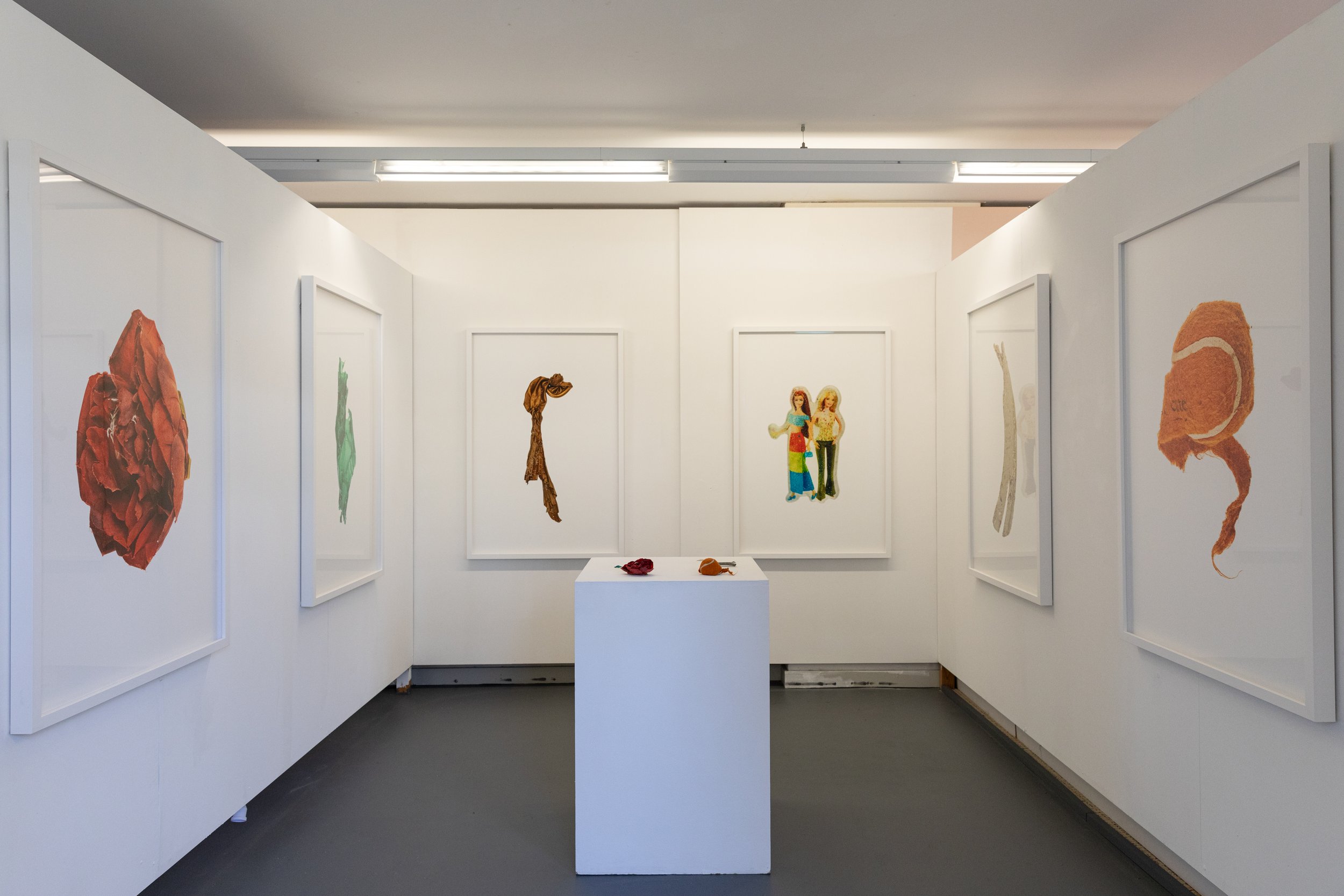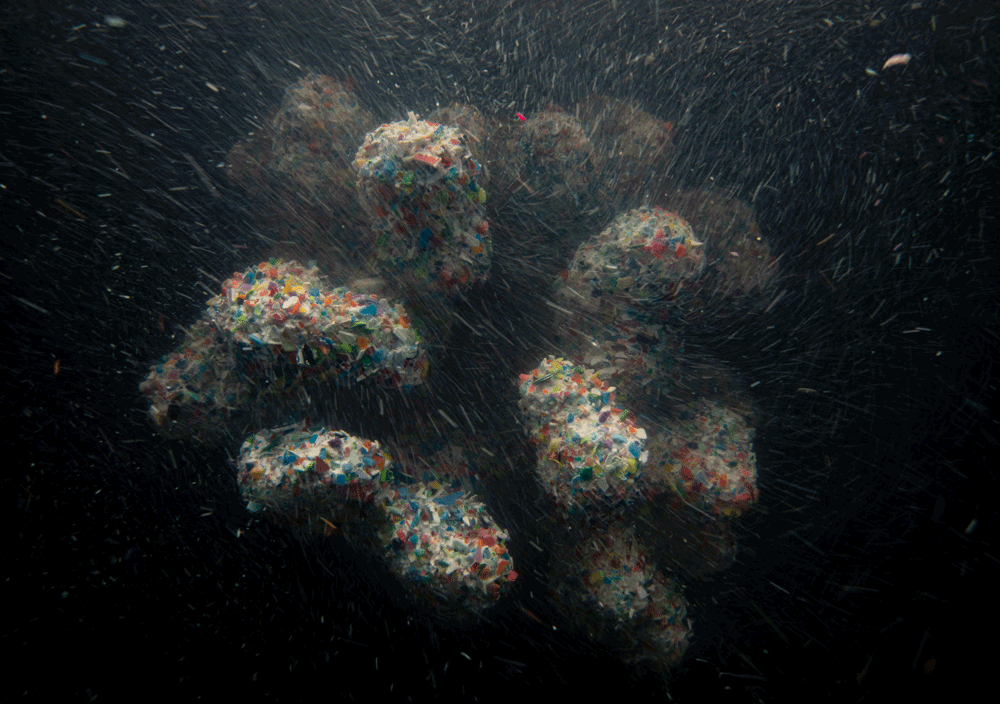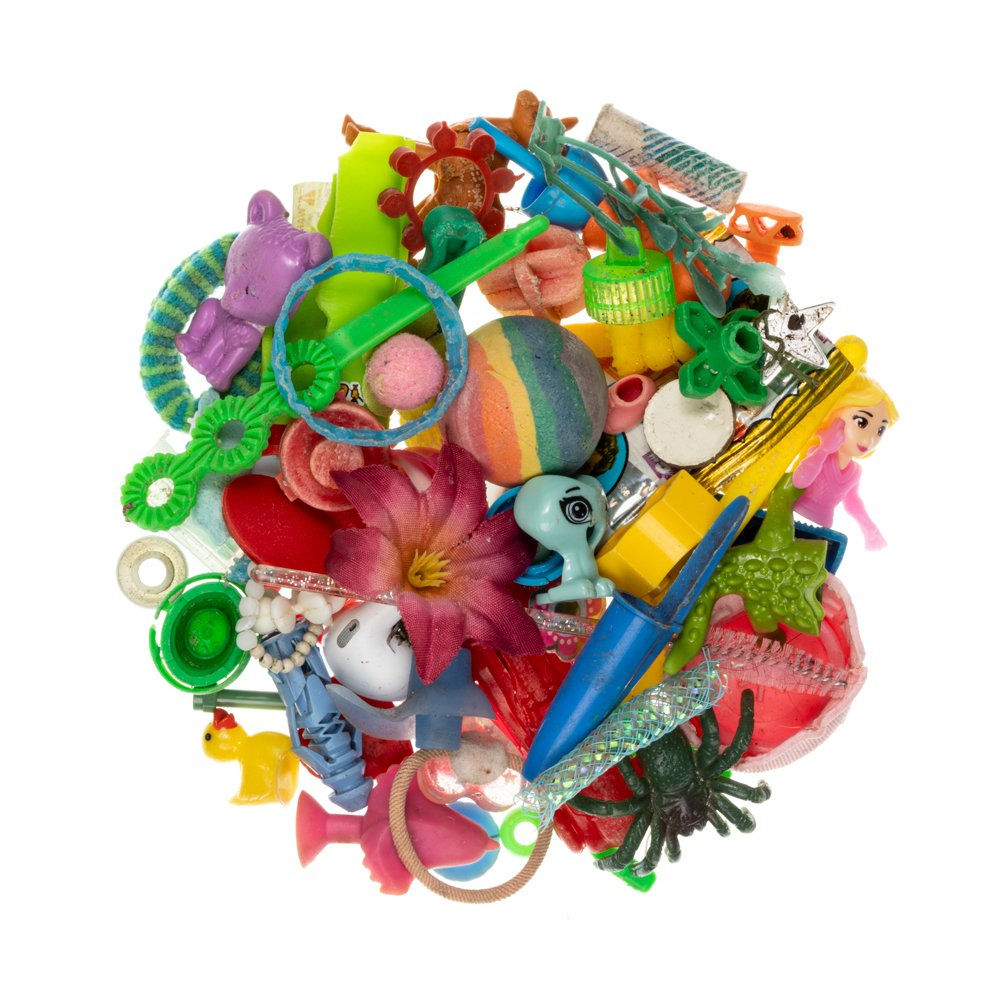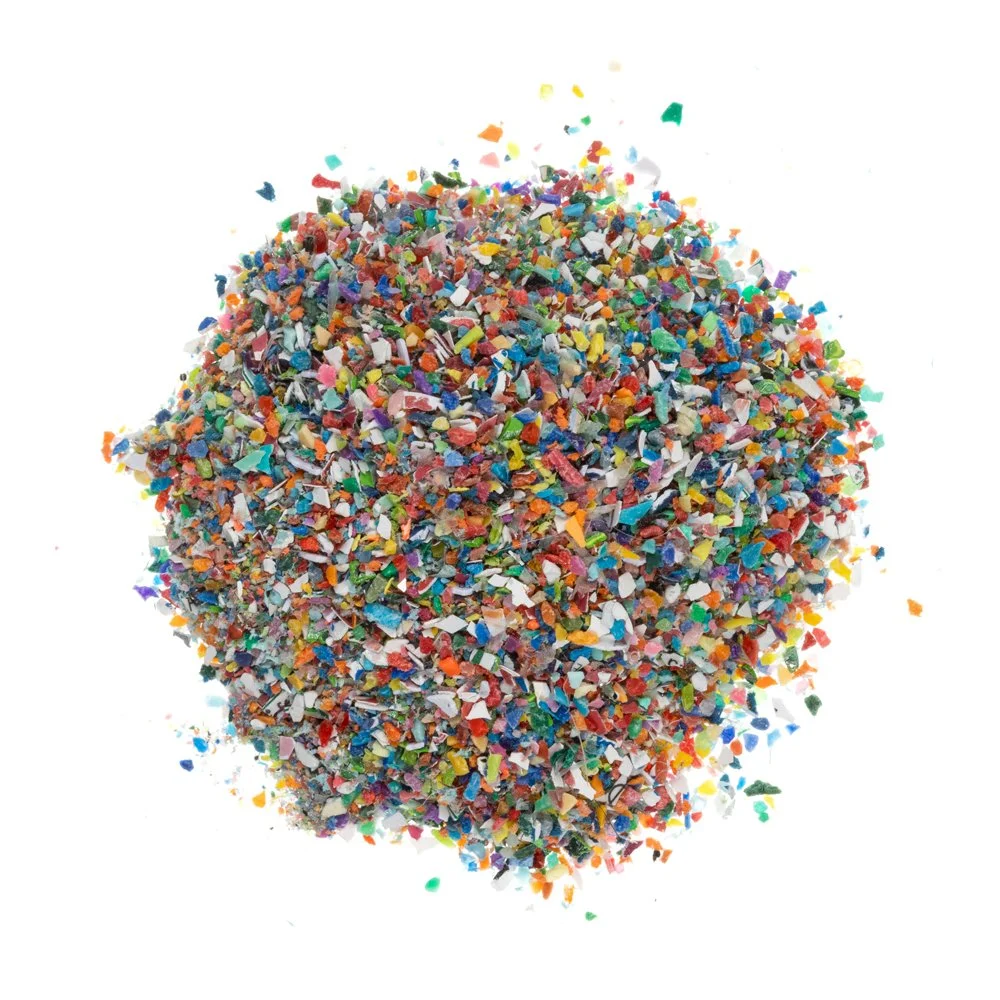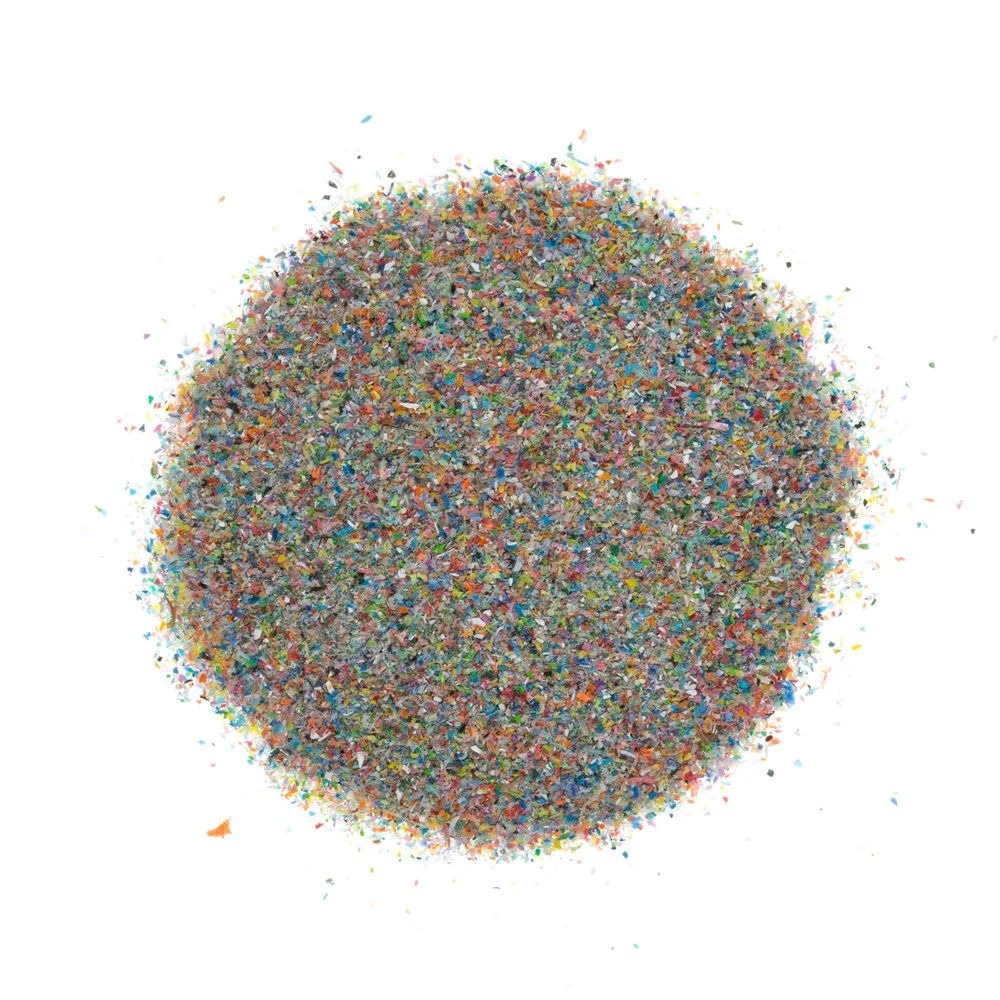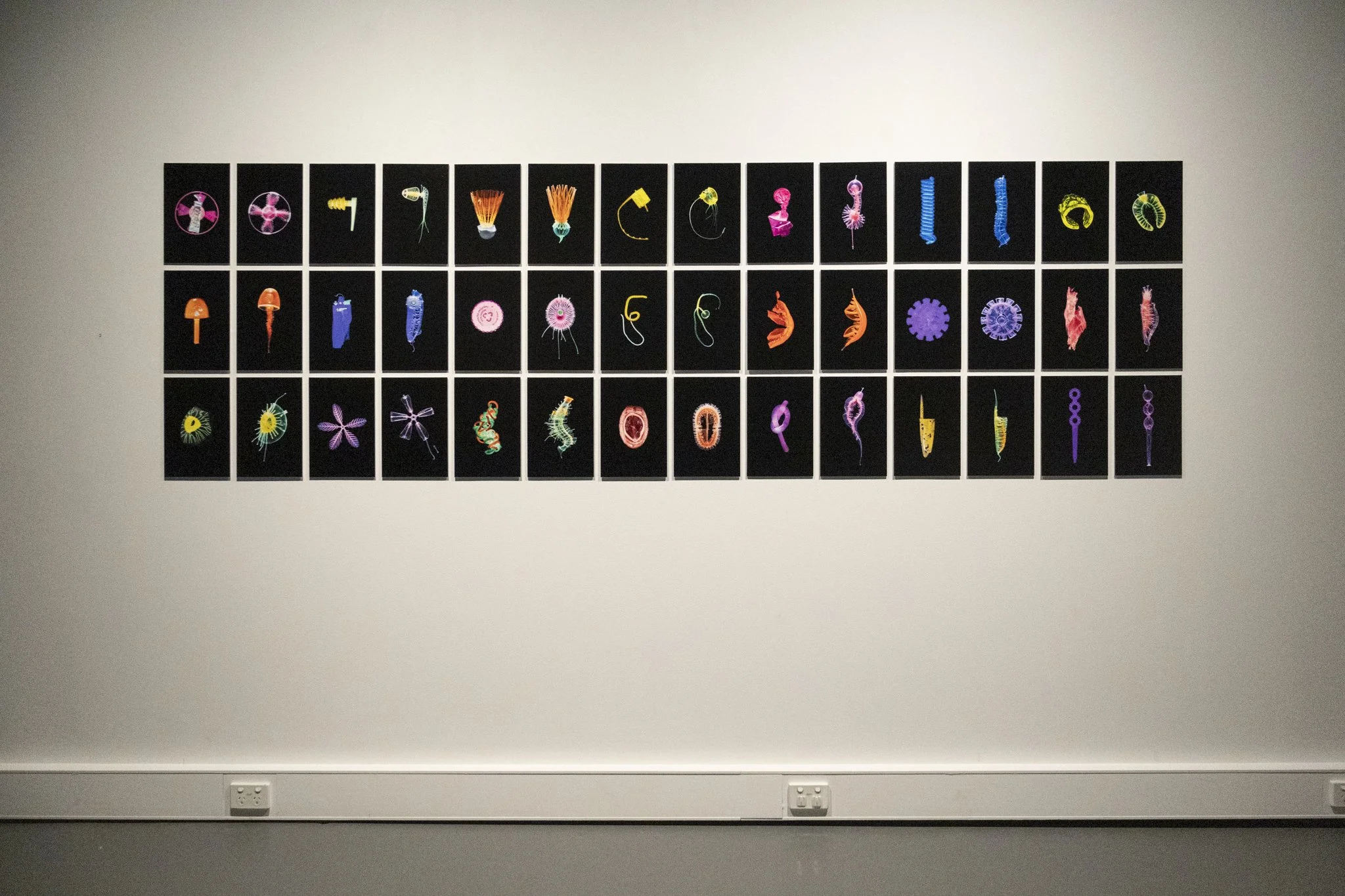Souvenirs of Consumerism presents an investigation into the materiality and ontology of discarded plastic consumer waste through a new materialist reimagining of found discarded objects. The work examines the social and ecological impacts of waste by gleaning, photographing, archiving, curating, and installation of the waste itself in the gallery space. Challenging the delineations made between ‘life’ and ‘matter’, ‘animate things’ and ‘passive objects’ the studio practice attempts to contend with systems of consumption, object devaluation and ecological pollution.
The studio research is supported by a theoretical examination of the ‘aesthetic abject’, object-oriented ontology, vibrant materialism, and the multidisciplinary field of Discard Studies. The project considers fields of historical and contemporary photography, museology, and curatorial practices, and examines the work of contemporary visual artists addressing environmental pollution and waste through the presentation of found objects in collections, archives, or multimedia installations.
By defining the destiny of discarded waste through a range of artistic transformations, the work brings visual attention to the abject reality of our nature/culture disconnection. This project works to challenge systems of object (de)valuation, consumer behaviour and capitalist ideology, while working to revalue the offerings of environmental art within the consumer-centric art world itself. This work offers us a new way to see ourselves through the objects we have tried (and failed) to throw away.
Ghosts of playthings, caught in the Seabin™ 2025
This work presents a collection of displaced toys salvaged from Seabin™ captures in Sydney Harbour, now contained within the fragile boundaries of a goldfish bowl. Once objects of play and comfort, these toys—faded, broken, waterlogged—are re-staged as relics of both innocence and excess. The bowl, typically a site of ornamental life, instead holds the afterlife of consumer culture: fragments of childhood compressed into a claustrophobic tableau.
Within the glass, familiar forms distort. A smiley face slumps into a grimace, a plush animal collapses into formlessness, and a plastic shark bares its teeth. Their proximity produces a sense of uncanny suffocation, where icons of joy and safety are transformed into abject assemblages. The transparency of the vessel makes their degradation visible, echoing vanitas traditions in which vessels staged mortality. Here, however, the mortality is cultural and ecological—childhood itself reframed through the lens of disposability.
These toys occupy an uneasy ontology. No longer animated by play, nor fully discarded, they persist as spectral debris. Their presence inside the bowl stages a paradox: preserved and displayed, yet stripped of vitality. In this sense, the work critiques the circulation of plastic as both commodity and pollutant, collapsing domestic intimacy with environmental ruin.
As a contemporary vanitas, the piece reflects on fragility, nostalgia, and complicity. The bowl, a fragile globe, becomes a microcosm of cultural detritus—an archive of what we leave behind, and a reminder that even the symbols of joy are not exempt from decay.
Current Times, 2025
This work stages a still life within the fragile boundaries of a fish tank, where fragments of plastic waste and a piece of dead coral drift under subtle currents. The water’s movement animates suspended microplastics, transforming inert debris into a ghostly performance. The fish tank, a domestic vessel of containment and display, here becomes both reliquary and coffin: a transparent stage that frames ecological collapse as spectacle.
At its centre lies a collision of ontologies. The coral, once alive, is enmeshed with synthetic detritus, forming a new hybrid assemblage where organic and artificial coalesce. These objects exist in a state of becoming, unsettling distinctions between life and death, nature and manufacture. The abject presence of waste recalls Julia Kristeva’s notion of boundary collapse—objects that repel even as they compel attention. The swirling fragments mesmerise like dust or constellations, but their beauty conceals toxicity, implicating the viewer in both fascination and unease.
The work thus functions as a contemporary vanitas. Where seventeenth-century still lifes staged decay to remind us of mortality, this image reflects the broader death of ecologies under consumer excess. The fish tank, once a site of ornament and domestic spectacle, becomes a container for extinction and persistence alike: holding not ornamental fish, but the enduring consequences of what we discard.
In collapsing classical symbolism with contemporary crisis, the work invites reflection on fragility, complicity, and the unsettling persistence of plastic as it enters the cycles of the natural world.
Walk This Way (Just Don’t Do It), 2025
My artistic practice always begins with the act of gleaning. I walk along the coastal foreshore of Sydney and pick up the plastic waste left behind.
An object becomes waste when it has been discarded, forgotten or displaced. This very act of ‘wasting’ an object impacts its function and materiality. It might fuse with the organic, non-plastic world to create a new object entirely. My work attempts to intercept the ontology of each piece of detritus that I find. My role as artist-as-intervener allows me to redefine the destiny and materiality of these abject/objects as symbols of our material culture. What you see is the result of gleaning, collecting and (re)presenting the object back to viewers and consumers. Through the museological lens of the glass cloche, I am hoping to offer a new way of seeing what we leave behind.
The material conditions of our nature/culture entanglements and the impacts, the footprints we leave behind, but cannot forget. So, how do we now walk forward?
Memento Mori, 2025
Memento Mori explores the ecological consequences of consumerism through a dark, visceral still life. Plastic debris and marine detritus, enmeshed in seaweed, evoke a modern vanitas—where nature’s decay meets synthetic permanence. These objects exist in a state of becoming: colonised by marine life, the plastic begins to blur boundaries between natural and artificial, life and waste, forming a new abject. The composition, echoing classical painting, invites reflection—not only on mortality, but on the transformation of matter. This image stands as both a lament and a call for urgent ecological awareness.
Becoming Dust, 2025
“Dreams no longer provide a view on blue horizons. Dreams have become grey. A grey layer of dust on things is dreams’ highest faculty today”. - Walter Benjamin
My work always starts with gleaning plastic detritus from the beaches of Sydney. I collect and curate the tangible, colourful remnants of our consumptive habits as an act of artistic intervention. An object becomes waste when it has been discarded, forgotten or displaced. My work attempts to intercept the ontology of each piece of plastic. The first flash of my camera freezes the objects I find in photographic form. I then work to blend and grind the plastic into dust with my kitchen blender. The second and third flash captures the in-between state of plastic-to-dust. The final flash captures this new collection of greying dust, pulsed into a thin layer of forgotten consumer dreams.
The result is a story of object permanence and impermanence, a series of flashing traffic lights forcing us to reflect on the material state of the dreams we are sold. The dreams that become dust in our landscapes, our homes, and our bodies.
The New Drifters Meet the Aided Eye, 2025
This Lenticular work offers a gentle walk across a visual juncture: a sprawl of marine plankton facing the threat of extinction as oceans warm, only to be replaced with individual plastic byproducts of overconsumption, ironically forged from finite fossil fuels themselves. This lenticular print overlays stock images of plankton with photographs I have taken of plastic waste I gleaned from the shore, individually photographed with a macro lens, digitally reduced and inverted in colour to mimic luminosity, cellular scale and visual quality of the natural biodiversity of our ocean.
Joyce Lubotzky is a multidisciplinary artist working across photography, installation, and curatorial practices. Her work focuses on the materiality and ontology of found objects, particularly the discarded plastic waste she has collected from local coastal and urban environments around Sydney.
Joyce finds new ways of representing the items we throw away as a mirror to ourselves and our patterns of behaviour as human beings. These art pieces are souvenirs of intimate human experiences, memories and desires, positioned to challenge and confront the ways we infinitely consume and devalue objects on a finite and fragile planet.
HARD/SOFT, 2025
This work began with a collection of over 1,000 pieces of plastic trash I have gleaned from the beaches near where I live on Gadigal land. As part of my everyday art practice, I photograph each piece of trash to create a digital and physical archive of plastic pollution, creating a story of transformation and re-imagination for the waste objects we consume and then leave behind.
Hard/Soft takes this a step further, leaning on the digitally transformative technology of artificial intelligence. I have always been drawn to the synthetic materiality of my trash objects, and so I have used tools like ChatGPT, DeepSeek and Midjourney to create synthetic realities of what these waste objects are replacing in our oceans - creating a nature/collapse we can’t even see.
My work has been driven by a desire to understand what pollution is, and I keep coming back to the work of academic Michel Serres, who, in his book, Malfeasance: Appropriation through Pollution, looks at both what he calls "hard pollution"—the poisoning of the Earth—and the disastrous impact of the "soft pollution" created by sound and images on our psyches.
In addition to collecting hard plastic waste, I’ve started collecting soft synthetic AI-generated images for this archive to further each object’s ontological transformation. These AI images feel like fitting plastic manifestations of our material/digital (hard/soft) consumption. We can now create synthetic reimaginings of our collective unconscious, but at what cost?
Like our polluted oceans, I think about our minds. The depth we can’t reach or see. There is both hard plastic pollution on our earth and soft plastic pollution in our brains. There is also hard plastic pollution in our brains and soft plastic pollution on our earth. And so I present a collection of plastic waste and synthetic reimaginings, entangled in a web of hard/soft collective contradictions and provocations.
Unnatural Synthesis, 2025
Leaning on the digitally transformative technology of artificial intelligence. I have always been drawn to the synthetic materiality of my trash objects, so I have used AI models to create synthetic realities of what these waste objects are replacing in our oceans—creating a nature/collapse we can’t even see.
Like our polluted oceans, I think about our minds. The depth we can’t reach or see. There is both hard plastic pollution on our earth and soft plastic pollution in our brains. There is also hard plastic pollution in our brains and soft plastic pollution on our earth. And so I present a collection of plastic waste and synthetic reimaginings, entangled in a web of hard/soft collective contradictions and provocations.
In addition to collecting hard plastic waste, I’ve started collecting soft synthetic AI-generated images for this archive to further each object’s ontological transformation. These AI images feel like fitting plastic manifestations of our material/digital (hard/soft) consumption. We can now create synthetic reimaginings of our collective unconscious, but at what cost?
The New Drifters, 2024
Phytoplankton are too small to be seen with the unaided eye. Our ocular capacity blinds us to their essential role in the carbon cycle and global photosynthetic activity. This blindness mirrors our collective ways of unseeing the trash we pollute into our oceans and our inability to hold in our minds the object permanence of what we discard.
This photograph lets us see the new plastic drifters; the detritus in our oceans crowding the vibrant marine plankton. Each individual piece is a gleaned waste object I have found by the coast, captured and inverted to resemble the disrupted underwater world of sea plankton. Now you can see them.
The Reflection Series, 2024
Mirror chrome paint on gleaned plastic trash: an intervention for discarded consumer waste dressed up in a silvery imitation of material value. This series redefines the destiny of each piece of plastic pollution I have gleaned from our local beaches. Now, they exist as reflective symbols of material culture.
Reflective surfaces upon which to examine whether the objects in our lives merely imitate what is truly valuable. So, in the objects we throw away can we ask: what really matters to us?
Girlhood and What Remains, 2024
A photographic collection of gleaned trash objects once used to satisfy our cultural dream of girlhood.
Objects of craft, connection, and colour, once sold as aspirational items of a constructed identity, are now washed up on the shore.
At first, we marvel at the objects’ sparkle, hue, shape, and cuteness. But when new social demands are imposed on women-as-consumers, these former objects of desire are discarded and littered in our environment as symbols of our collective unconscious in the form of waste.
A Taxonomy of How We Eat Fish, 2024
We overfish and flavour our food. We bottle the flavour, the ferment, the paste, in single-use plastic bottles with fish eyes and fish faces. We marvel at the fish bottle. Their sense of whimsy. The Japanese entomologist Yoshisha Sawada has identified 76 kinds of soy sauce fish containers. 6 Families. 21 Geni.
This is my collection of plastic soy fish bottles I have gleaned from the shores of Sydney, taxonomised in order from full and unused, through to used and degraded by the environment, then empty and discarded.
The plastic fish, now labelled with the names of endangered species of fish; reimagine our finite natural resources. We eat, displace, and poison. We name, taxonomies, and sort in systems, as an attempt of dominion over the world around us. Then we fill the void we have created with plastic imitations, and they are so cute.

To Score, 2023 — Digital Photograph printed on Ilford Fibre Gloss paper. 86x126 cm framed.

To Harbour, 2023 — Digital Photograph printed on Ilford Fibre Gloss paper. 86x126 cm framed.

To Greenwash, 2023 — Digital Photograph printed on Ilford Fibre Gloss paper. 86x126 cm framed.

To Doll-Up, 2023 — Digital Photograph printed on Ilford Fibre Gloss paper. 86x126 cm framed.

To Inflate, 2023 — Digital Photograph printed on Ilford Fibre Gloss paper. 86x126 cm framed.

To Outlive, 2023 — Digital Photograph printed on Ilford Fibre Gloss paper. 86x126 cm framed.
